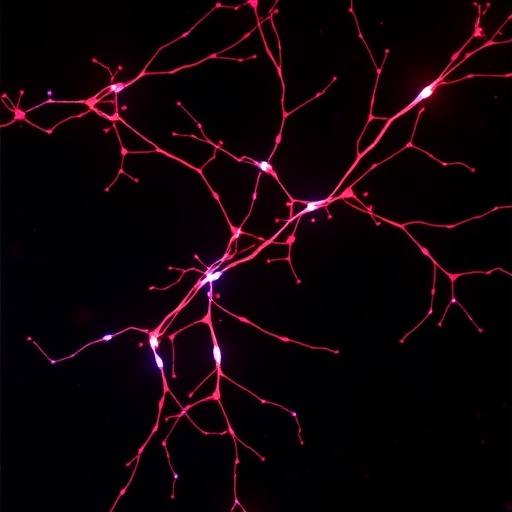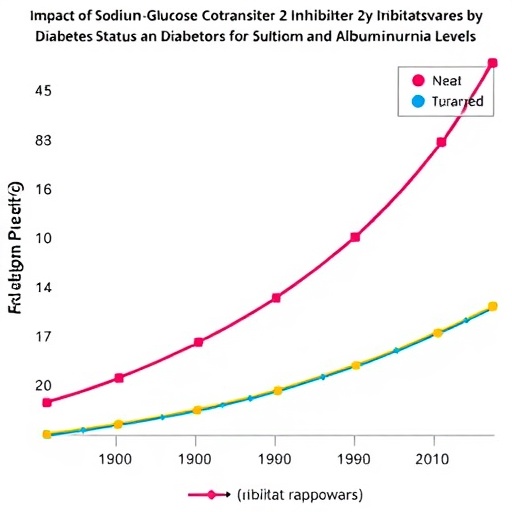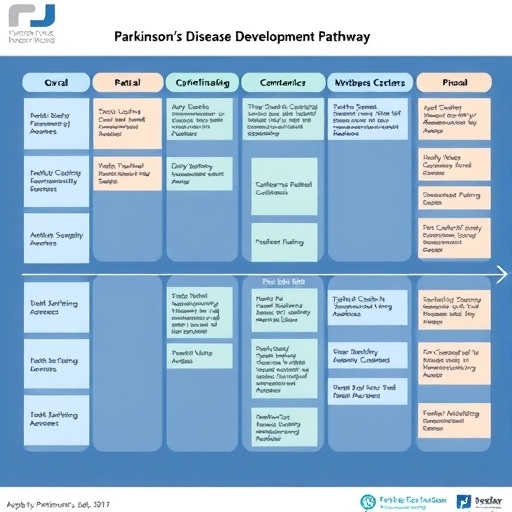In an era where fertility challenges increasingly capture the scientific and public imagination alike, new revelations into the intricate cellular machinery governing sperm function stand at the forefront of reproductive biology. A breakthrough study recently published in Nature Communications unveils the critical role of the TEX44-CPT1B molecular axis in controlling mitochondrial sheath formation and fatty acid metabolism within sperm cells. This pioneering research not only sheds light on the fundamental underpinnings of sperm bioenergetics but also opens novel avenues for addressing male infertility, with broad implications for human reproductive health.
Sperm cells are uniquely equipped with a dense, helix-shaped mitochondrial sheath that wraps tightly around the flagellum, providing the energy necessary for motility. Despite its crucial role, the molecular pathways orchestrating the assembly and function of this mitochondrial sheath have remained, until now, elusive. The team led by Zhi, E., Bai, H., and Ren, C., among others, employed state-of-the-art molecular biology techniques and high-resolution imaging to decode an essential regulatory mechanism involving TEX44, a relatively obscure protein, and CPT1B, a key enzyme in fatty acid oxidation.
The significance of these findings can be appreciated when considering the importance of mitochondria in sperm cells. Unlike most cells, spermatozoa rely heavily on fatty acid oxidation to meet their substantial ATP demands during the arduous journey through the female reproductive tract. CPT1B, known for its rate-limiting role in transporting fatty acids into mitochondria for β-oxidation, emerges here as a central mediator ensuring efficient energy production calibrated to sperm needs. The researchers convincingly demonstrated how TEX44 interacts with CPT1B to maintain mitochondrial sheath integrity while modulating mitochondrial metabolic flux.
.adsslot_txcsJhkDrT{ width:728px !important; height:90px !important; }
@media (max-width:1199px) { .adsslot_txcsJhkDrT{ width:468px !important; height:60px !important; } }
@media (max-width:767px) { .adsslot_txcsJhkDrT{ width:320px !important; height:50px !important; } }
ADVERTISEMENT
Using genetically engineered mouse models deficient in TEX44, the study documented profound disruptions in mitochondrial sheath assembly. This disruption corresponded with significant declines in sperm motility and fertility, underscoring the physiological relevance of TEX44. Intriguingly, CPT1B levels and activity were markedly decreased in these TEX44-deficient spermatozoa, suggesting a molecular relay through which TEX44 governs CPT1B stability or expression. Through a combination of proteomics, electron microscopy, and live-cell imaging, the researchers mapped how this molecular axis orchestrates mitochondrial morphology and metabolic competence.
Fatty acid oxidation, powered by CPT1B function, provides a substrate for continuous ATP generation essential for flagellar beating and sperm navigation. Without a robust mitochondrial sheath, energy metabolism becomes insufficient, impairing motility and thus the sperm’s fertilization potential. This mechanistic insight elegantly bridges structural biology with metabolic biochemistry within one of nature’s most specialized motile cell types. By highlighting the TEX44-CPT1B axis, the study provides a new molecular target that could transform diagnostic and therapeutic approaches for male factor infertility.
The implications of this research reach beyond fertility treatments. Since mitochondrial dysfunction and metabolic dysregulation are implicated in a broad spectrum of diseases, understanding how specific protein interactions govern mitochondrial assembly might reveal fundamental principles applicable to other cell types and contexts. TEX44, previously uncharacterized in this regard, is now positioned as a candidate for further study in mitochondrial pathophysiology, potentially linking reproductive biology to systemic metabolic disorders.
Moreover, the study deployed sophisticated biochemical assays to quantify fatty acid oxidation rates in sperm cells, revealing an impressive decrease in β-oxidation activity when the TEX44-CPT1B axis was compromised. These quantitative biochemical measures reaffirm that the mitochondrial sheath is not purely a structural entity but a dynamic metabolic hub finely tuned by protein-protein interactions. The researchers postulated that therapeutic modulation of this axis could enhance sperm function in cases of metabolic infertility, a hypothesis warranting future clinical investigations.
Further dissecting the regulatory network, the authors identified posttranslational modifications on TEX44 that might influence its binding affinity to CPT1B, hinting at complex control layers responsive to cellular energy status or hormonal cues. These findings invite a deeper exploration into how the TEX44-CPT1B axis is regulated temporally during spermatogenesis and in response to systemic physiological changes. Such knowledge will be vital for designing targeted interventions that preserve or restore mitochondrial sheath functionality.
The work also incorporated cutting-edge imaging modalities, including super-resolution microscopy and 3D reconstruction, to visualize mitochondrial sheath defects at an unprecedented resolution. This visual documentation lends powerful support to the biochemical data, offering a compelling narrative about mitochondrial sheath disorganization correlating with functional deficits. These technologies underpin a new era of structural-functional analysis in reproductive biology, enabling direct observation of molecular processes previously inferred only indirectly.
While the TEX44-CPT1B axis represents a newly identified regulatory mechanism, the study situates it within a broader framework of mitochondrial dynamics involving fusion, fission, and mitophagy pathways. Cross-talk between these pathways likely contributes to the delicate architecture of the mitochondrial sheath and its capacity for metabolic adaptation. Elucidating how TEX44-CPT1B integrates with these canonical mitochondrial quality control systems remains an exciting frontier that could redefine our understanding of sperm bioenergetics.
In addition to mechanistic insights, the research team explored the potential evolutionary conservation of this axis by analyzing TEX44 and CPT1B homologs across mammalian species. Conservation patterns suggest that this regulatory module is a fundamental feature of mammalian sperm biology, underscoring its significance and translational potential. Investigating how species-specific variations influence sperm energetics might explain differences in fertility rates and adaptions to reproductive strategies in different ecological niches.
The clinical relevance of these discoveries cannot be overstated. Male infertility affects millions globally, often linked to idiopathic mitochondrial dysfunction within sperm. By pinpointing a concrete molecular mechanism, this research lays the groundwork for novel diagnostics aimed at detecting TEX44 or CPT1B deficiencies. Furthermore, small molecules or gene therapy approaches designed to enhance TEX44 function or mimic CPT1B activity could transform male fertility treatments, offering hope where current interventions fall short.
The study concludes by proposing broader investigations into the TEX44 interactome and its role beyond sperm physiology. Given the critical nature of mitochondrial metabolism in numerous cell types, TEX44 may have unsuspected roles in muscle cells, neurons, or even cancer metabolism. Future research building on these findings could catalyze breakthroughs across diverse biomedical fields, illustrating how a focused study on sperm mitochondria can resonate broadly.
In sum, the elucidation of the TEX44-CPT1B axis as a pivotal regulator of mitochondrial sheath assembly and fatty acid oxidation in sperm represents a landmark advance in reproductive and cellular biology. By seamlessly integrating structural, biochemical, and genetic approaches, this work provides a compelling narrative linking molecular architecture to energetic function—an insight that transforms our understanding of sperm motility and fertility potential. As the scientific community digests this seminal contribution, it becomes clear that such mechanistic clarity ushers in a new era of targeted fertility interventions and mitochondrial research that promises to reverberate for years to come.
Subject of Research: Regulation of mitochondrial sheath assembly and fatty acid oxidation in sperm cells
Article Title: The TEX44-CPT1B axis regulates mitochondrial sheath assembly and fatty acid oxidation in sperm
Article References:
Zhi, E., Bai, H., Ren, C. et al. The TEX44-CPT1B axis regulates mitochondrial sheath assembly and fatty acid oxidation in sperm.
Nat Commun 16, 7864 (2025). https://doi.org/10.1038/s41467-025-63280-x
Image Credits: AI Generated
Tags: fatty acid metabolism in spermhigh-resolution imaging in biologyimplications for human reproductive healthmale infertility researchmitochondrial sheath formationregulatory mechanisms in sperm functionreproductive biology breakthroughssperm bioenergetics mechanismssperm cell energy metabolismstate-of-the-art molecular biology techniquesTEX44-CPT1B molecular axisunderstanding sperm motility energy sources





